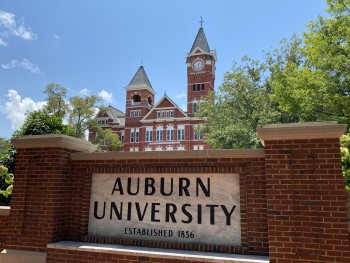A biotech developer, a pavement engineer and a DC lawyer walk into a university conference center . . .
This pretty much described some time I spent at Auburn University this week, and it was fantastic.
A National Science Foundation (NSF) workshop at Auburn hosted a close group of about 30 people and included researchers from several universities, tech developers, and experts in telecom and cyber security. The goal of the gathering was to identify strategies for deploying civil infrastructure and technology in rural areas. As satisfying as the discussion outcomes were the conversational paths that led to our conclusions.
Cutting to the chase, reliable and robust broadband placed prominently in a survey of participants, joining access to power and clean water as the top three most necessary elements for rural living. To be sure, as one person noted, the group was somewhat self-selecting: Everyone there had forward-thinking visions for rural spaces and how connected technology can play a role. But that common commitment to technology was precisely the catalyst for ideas that today may seem far-reaching, yet tomorrow (like many advancements we now enjoy) seem quite ordinary.
For example, connectivity to improve rural road safety. The U.S. Department of Transportation (USDOT) reports that while 19% of Americans live in rural areas, and only one-third of total vehicle miles traveled (VMT) are in rural areas, 43% of the Nation’s traffic fatalities occurred on rural roads in 2020. The University of Iowa has developed Automated Driving Systems (ADS) for Rural America, a program aimed at using technology to mitigate natural driving hazards in rural areas, including sharp curves and grades, slow moving vehicles, animals on the road, and roads without lane markings. Collisions with farm vehicles remain a prevalent hazard in rural spaces, and technologies to warn other drivers of slow-moving equipment or school buses could decrease accidents. Sensors can also be embedded in roads and bridges to detect stress and guide preventative maintenance or predict failure before it occurs.
Participants also discussed strategies to reduce long bus times for rural students by establishing connected satellite schools that can be part of a “hybrid schooling” option – several days each week at small schools that are located close-in to communities, supplemented by days where all students come together at a larger regional facility for broader interactions and extra curriculars like sports. (Numerous articles explore the relationship between bus ride lengths, school absenteeism, and academic performance.) Of course, educators would be part of any conversations to consider these proposals, but the goal of the meeting was to explore possibilities.
And possibilities factored highly at this meeting. As the NSF website proclaims, "Innovation Anywhere, Opportunity Everywhere" (this might be my new mantra).Participants were asked, “If funding was unlimited, what would you deploy in rural areas?” As noted above, broadband placed high on the list, but improved transportation infrastructure and services were also identified -- and engineers and experts tied those to IoT and smart, broadband enabled applications. Participants also discussed regional collaboration to invigorate economic development and pointed at a nearby KIA plant in West Point, Georgia, as an example of a regional employer that spurs gains across several communities.
Many of the ideas surfaced in the conversation reflected (and some were informed by) actual achievements of Smart Rural Community Showcase award winners (look forward to Fall Conference 2023 for the announcement of this year’s cohort!). And like our SRC efforts, the conversations aimed toward working with local communities to target needs and the meaningful application of technology to meet them. As one participant noted, “Identify the goal, and innovation will occur along the way.”
The workshop in Auburn was a great place to start.
Next steps will include the preparation of a recommendations report for future efforts with the NSF.
Blog


